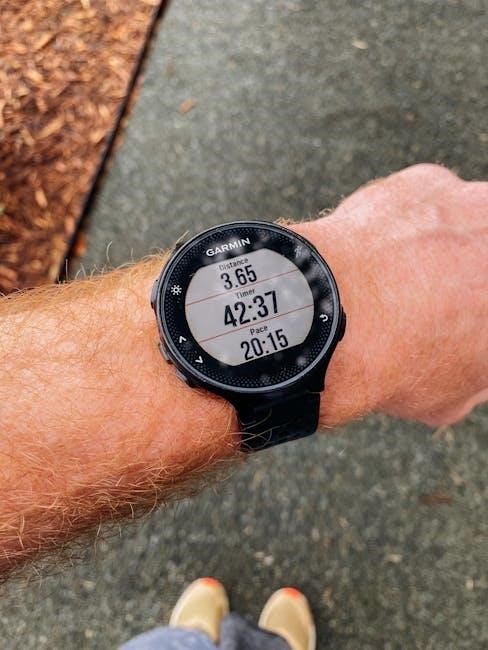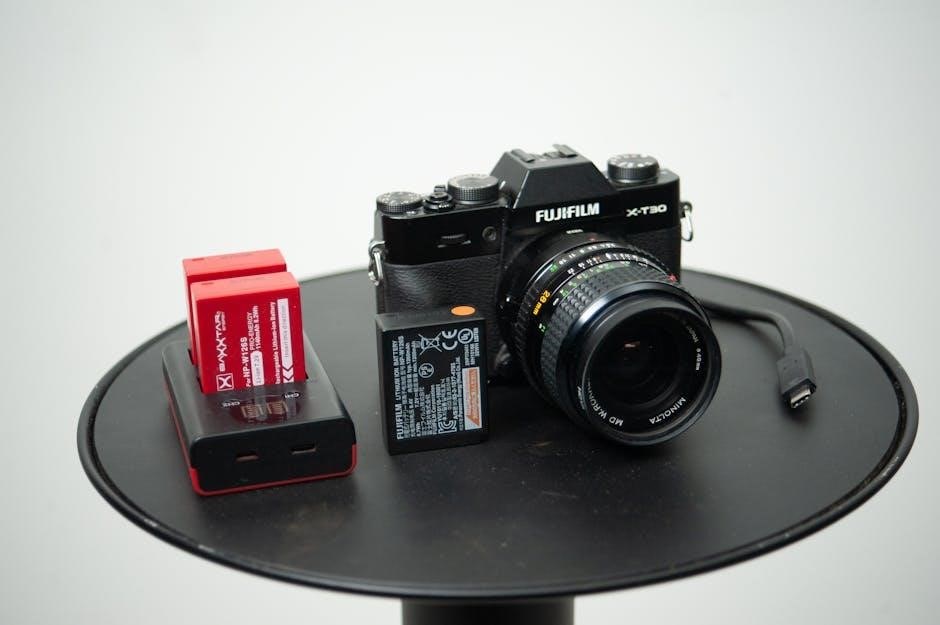Spiritual warfare is an essential journey for women to embrace faith, prayer, and community, empowering them to overcome life’s challenges and live victoriously in Christ.
Understanding the Basics of Spiritual Warfare
Spiritual warfare is the ongoing battle between good and evil, requiring women to embrace prayer, Scripture, and faith. It involves recognizing demonic tactics and generational curses, while trusting in God’s power to break cycles of bondage. By seeking God through prayer and wise counsel, women can overcome spiritual weaknesses and create a refuge of strength in their homes. Understanding this battle is crucial for living a life of purpose and victory in Christ, empowering women to stand firm against the enemy and trust in God’s plan for their lives.
The Importance of Spiritual Warfare in a Woman’s Life
Spiritual warfare is vital for women as it empowers them to overcome life’s challenges and live victoriously in Christ. It equips them to protect their homes, families, and marriages from demonic influences, fostering a refuge of spiritual strength. By engaging in this battle, women can break generational curses and weaknesses, embracing freedom in Christ. Spiritual warfare also deepens their faith, encouraging prayer and community support, essential for navigating life’s struggles. Ultimately, it helps women live a life of purpose, trusting God’s plan and finding victory in every circumstance.

Biblical Principles for Spiritual Warfare
Biblical principles guide women to trust God’s strength, stand on His truth, and wield spiritual weapons like prayer and Scripture to overcome life’s battles victoriously.

The Armor of God: Essential Weapons for Women
The Armor of God, as outlined in Ephesians 6, equips women with spiritual weapons to combat darkness. Each piece—belt of truth, breastplate of righteousness, shoes of peace, shield of faith, helmet of salvation, and sword of the Spirit—protects and empowers. Prayer and standing firm in God’s Word are vital for victory. By embracing these tools, women can confidently face life’s battles, trusting in God’s strength and provision. This divine armor not only defends but also enables women to advance in faith, overcoming challenges and living purposefully in Christ.

The Power of Prayer in Spiritual Battles
Prayer is a lifeline in spiritual warfare, connecting women to God’s power and wisdom. Through prayer, women can seek guidance, strength, and protection, aligning their hearts with God’s will. Using Scripture in prayer amplifies its effectiveness, as God’s Word is a powerful weapon against darkness. Persistent and heartfelt prayer fosters intimacy with God, enabling women to discern His voice and trust in His plan. Prayer also unites believers, creating a strong support system for spiritual battles. By prioritizing prayer, women can overcome fear, doubt, and discouragement, standing firm in faith and experiencing victory through Christ’s empowerment.
Recognizing the Enemy
The enemy, led by Satan, uses deception, division, and doubt to attack women’s faith and families, requiring vigilant prayer and biblical truth to counteract.
Identifying Demonic Forces and Their Tactics
Demonic forces operate through deception, division, and doubt, targeting women’s faith, relationships, and emotional well-being. Their tactics include manipulation, lies, and subtle influences to create spiritual strongholds. By masquerading as truth, they lead to confusion and fear. These forces often exploit generational curses, weaknesses, and unhealed wounds, making women vulnerable to spiritual attacks. Recognizing these patterns is crucial for effective spiritual warfare. Understanding their strategies empowers women to prayerfully counteract them with biblical truth, discernment, and the armor of God. Awareness is the first step toward breaking free and living victoriously in Christ.

Understanding the Role of Satan in Spiritual Warfare
Satan, the adversary, seeks to deceive and destroy, targeting women’s faith, relationships, and purpose. His role involves sowing discord, fostering fear, and blinding minds to God’s truth. As a spiritual enemy, he manipulates circumstances to create doubt and rebellion against God. However, his power is limited and ultimately defeated by Christ’s victory. Women must recognize Satan’s schemes to resist his influence effectively. By standing firm in God’s authority and truth, they can overcome his tactics and live in freedom and victory. Understanding his role equips women to prayerfully counter his attacks and trust in God’s superior power and sovereignty.
Breaking Free from Bondage
Breaking free from bondage involves prayer, faith, and community support, empowering women to overcome spiritual strongholds and walk in God’s freedom and transformative power.
Overcoming Generational Curses and Weaknesses
Generational curses and weaknesses often manifest as recurring patterns of fear, anger, or addiction passed down through families. These can be broken through prayer, forgiveness, and intentional spiritual steps. By identifying these cycles and renouncing them in Jesus’ name, women can sever the enemy’s hold and embrace freedom. Renewing the mind with God’s truth and seeking accountability with trusted believers are key to lasting victory. The process requires patience, faith, and a deep reliance on the Holy Spirit. Ultimately, breaking free from generational bondage allows women to live in the fullness of God’s purpose and inheritance, free from inherited strongholds.
How to Recognize and Break Free from Spiritual Abuse
Spiritual abuse often manifests as manipulation, control, or exploitation under the guise of religious authority. Signs include feelings of guilt, fear, or isolation enforced by others. To break free, women must first recognize these patterns and seek discernment through prayer. Surrounding oneself with trusted, supportive communities and seeking accountability are vital steps. Setting boundaries and rejecting false teachings aligned with God’s truth are essential. Healing involves embracing grace, rejecting shame, and understanding their true identity in Christ. Professional counseling and therapy can also aid in recovery. Freedom from spiritual abuse requires courage, faith, and a commitment to spiritual renewal and wholeness.

Creating a Spiritual Refuge
Creating a spiritual refuge involves crafting a sanctuary of peace through prayer, worship, and Scripture, fostering a home where faith and strength flourish deeply.
How to Make Your Home a Place of Spiritual Strength

Transforming your home into a spiritual refuge begins with prayer and worship, creating an atmosphere of peace and strength. Regular family devotionals and Scripture reading help foster unity and faith. Declaring blessings over your home and renouncing negative influences establishes a sacred space. Displaying biblical verses and symbols of faith serves as constant reminders of God’s presence. Praying over each room dedicates your home to His purpose, making it a sanctuary where love, joy, and spiritual growth thrive. By intentionally cultivating a God-centered environment, you create a place where your family can find strength and refuge in Him.
The Role of Family and Marriage in Spiritual Warfare
Families and marriages play a vital role in spiritual warfare as they serve as a support system and a source of strength. Praying together, sharing Scripture, and fostering unity create a strong spiritual foundation. A husband and wife who stand in agreement and support each other’s faith journeys can withstand spiritual attacks more effectively. Teaching children biblical values and prayer equips them to face life’s challenges. By prioritizing spiritual growth and mutual encouragement, families can create a nurturing environment that reflects God’s love and protection, becoming a united front against spiritual darkness and a beacon of hope in their community.

Fighting for Victory
Trust in God’s power, pray fervently, and stand firm on Scripture to overcome spiritual battles. Victory comes through faith, perseverance, and reliance on divine strength and guidance.
Practical Steps to Achieve Spiritual Victory
Achieving spiritual victory begins with a deep connection to God through daily prayer and Scripture study. Women can armor themselves with truth, righteousness, and faith, praying fervently for guidance and strength. Building a support system through community and fellowship is crucial. Recognizing and resisting demonic tactics, such as fear and doubt, strengthens resilience. Embracing accountability and seeking mentorship fosters growth. Trusting in God’s sovereignty and His plan for victory empowers women to stand firm against spiritual attacks. By living intentionally and relying on divine power, they can overcome any challenge and live a life of purpose and triumph.

The Power of Community and Fellowship in Warfare
Community and fellowship are vital in spiritual warfare, providing women with a supportive network to withstand attacks. Gathering with like-minded believers fosters encouragement, accountability, and collective prayer, amplifying spiritual strength. Sharing testimonies and experiences creates bonds, reminding women they are not alone in their battles. Corporate prayer and worship mobilize divine power, breaking chains and bringing victory. Fellowship also offers practical help, such as childcare or emotional support, enabling women to focus on their spiritual journeys. By leaning on one another and united in faith, women can overcome darkness and walk in the light of Christ together, fulfilling their purpose boldly.
Empowered by faith and trust in God, women can overcome darkness and live purposefully, embracing their role in spiritual warfare with confidence and grace always.
Living a Life of Purpose and Victory in Christ
Living a life of purpose and victory in Christ requires women to trust God’s plan, stand firm on His Word, and embrace the power of prayer. By seeking Him daily through Scripture and fellowship, women can overcome spiritual battles and walk in confidence. Surrounding oneself with a supportive community and practicing spiritual disciplines strengthens faith and resilience. Understanding that spiritual warfare is not a battle of flesh but of the spirit, women can trust in God’s sovereignty and grace. Through surrender and obedience, they can live a life that reflects Christ’s victory, finding purpose and joy in His eternal plan.























































